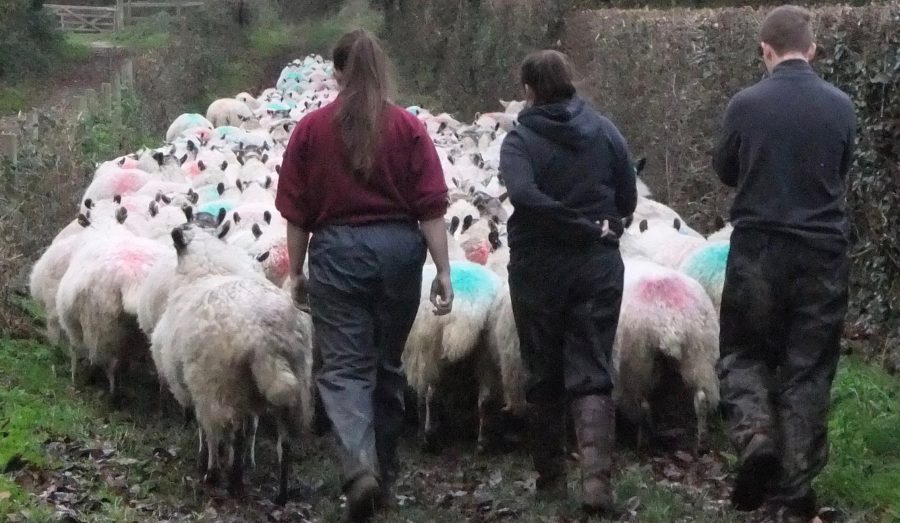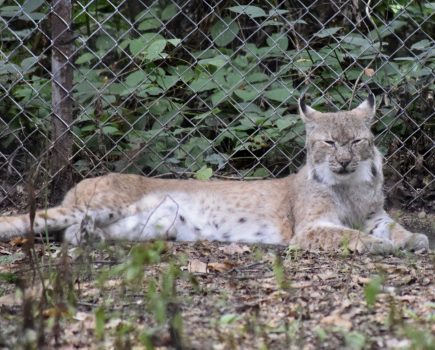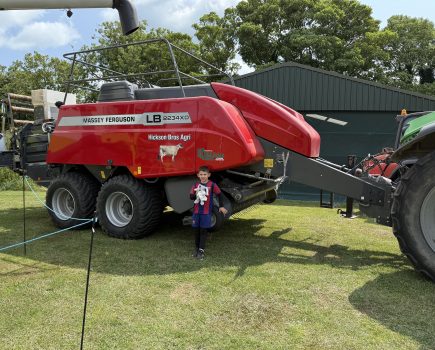One topic that has been raised consistently in conversations with sheep producers around shows, sales, markets and events from the South West to the Midlands to the South East, has been concerns about the scarcity (although not a complete lack) of good, young entrants to the sheep sector.
Having been involved in agricultural education for almost 40 years, it is a subject I have tried to avoid for fear of treading on toes, but needs must. With the average age of sheep farmers in the UK at around 60, many who are approaching, or have passed, their sell-by date are keeping going simply because of the lack of suitable replacements. The sheep sector desperately needs good, well-trained and skilled young entrants. For some, family members have simply found better-remunerated employment beyond the farm gate; others have sought working shepherds to help but have been unable to find suitable applicants.
It is a difficult situation with no easy fix, but one that we all need to assist in resolving. To a degree it’s a problem of our own making; there are certainly elements within the sector that are disparaging of new entrants, their opprobrium largely based on some rather outmoded prejudices and a failure to recognise that we now, rightly or wrongly, live in a very different world in terms of attitudes to work and the quality of training that many of the youngsters receive. The bias is often based on third-hand knowledge and their own experiences as youngsters entering the industry. I appreciate that labour is an expensive resource and that the majority of sheep enterprises simply cannot afford to carry passengers, but with a bit of forbearance and some appropriate on-the-job training (often guidance), a new entrant can, relatively quickly, become a productive member of a shepherding team.
With regard to skill levels and quality of training, many of the older people within the sector measure the qualities of college leavers against their own educational/college experiences, but sadly this is akin to comparing “chalk with cheese”. Courses are not the same; those that achieved a national diploma in agriculture, dairying etc decades ago studied completely different courses in terms of content, context and academic rigour to the modern national diploma student.
The political decision some quarter of a century ago to direct 50% of school leavers into a university education inevitably led to a gradual shuffling down of standards, starting from the top but now pervading all levels of both further and higher education; my apologies to some of my past students, but as a measure, in my latter years in agricultural education, I taught successful (some very good) degree students at level 6 that 30 odd years ago would simply have been good diploma (level 3) students. It is not the fault of the youngsters. Neither, generally, is it the fault of the colleges. Many have excellent staff, working hard, determined to make a “silk purse out of a sows ear”; some with a reasonable degree of success, others who really could do better and, sadly, a few who are failing both their students and the industry.
The fault sits predominantly with permitted course provision. Gone are the days of college-devised and externally moderated courses that enabled colleges to afford a degree of local flavour to their courses; they have been replaced by centrally devised and administered courses, the content and rigour of which has sadly diminished over the past three decades or so. Much course content is now generic (cheaper). For example, an agricultural student will basically follow the same business studies course as a hairdresser; slightly different emphases, but basically the same course. Gone are the days when a good diploma student coming out of college was capable of putting together a reasonably accurate and well-costed five-year farm business plan. Many now won’t even understand a gross margin or cash flow forecast; don’t blame the students for failures in the system.
Agricultural education is unfortunately rather resource-heavy. These are expensive courses to run, and while they do attract some additional funding, finances rely very much on ‘bums on seats’, a need that has, in some of the less popular colleges, led to a ‘degree of flexibility’ in both admissions and achievement criteria, with considerable pressure, again financial, for students once enrolled to succeed, whether or not success is entirely deserved.
The whole system of agricultural education (and other vocational areas) is in desperate need of significant revision; it’s a solvable problem, but it does require political will to bring about changes. If you are concerned about the lack of willing and suitable candidates to join an ageing workforce and, inescapably, the long-term future of the sheep sector, don’t just moan about it, pressure organisations such as the NFU, NSA etc to lobby government. We really do need change, but don’t blame the younger generation.
Shepherding and sheep keeping will never be as financially rewarding as many other career paths, but it does have other, often-intangible benefits, job satisfaction being high on the list. We need to be able to sell the positive aspects of the role. Shepherding can be hard, but it is rewarding work. It is simply that the rewards may not always be immediately obvious; probably not the easiest thing to sell to a teenager, but that does not mean that we shouldn’t try as an industry to encourage them.
There are good youngsters desperate to work in the sheep sector; there are also those who, having gained a bit of experience, are struggling to get started as sheep keepers in their own right. There is a duality of needs; older sheep keepers struggling with the work but with the resources and young, capable shepherds, with experience, struggling to gather sufficient resources to establish their own business. Surely such situations merit the consideration of some contract farming arrangements capable of satisfying both needs; providing an enthusiastic young shepherd with an opportunity to develop business experience, build a meaningful resource base and shoulder much of the workload, while enabling the resource bringer, the older sheep keeper, to step back, possibly to ease into retirement. It is an approach that does require careful planning, but one which can be mutually beneficial. Give the youngsters a chance; the industry needs them, desperately.
Pictured: Young shepherds in the making?
For more like this, sign up for the FREE South East Farmer e-newsletter here and receive all the latest farming news, reviews and insight straight to your inbox.







